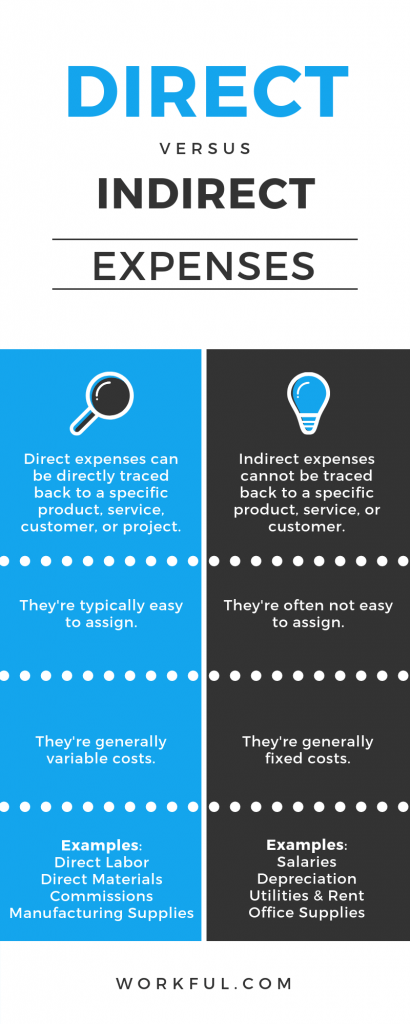Direct vs. Indirect Expenses – What’s the Difference? [Infographic]

As a small business owner, it’s essential to track all your expenses, but it’s also vital that you track direct and indirect expenses separately. This will allow you to follow your budget more closely. It will also help you price your products or services more accurately.
You can deduct business costs from your taxes. Tracking your direct and indirect expenses separately will help you take advantage of those deductions, which will lower your tax burden.
So, what’s the difference between direct and indirect expenses anyway?
Direct expenses
Direct expenses can be traced to a specific product, service, customer, or project. These costs are typically easy to assign because you can connect them to a particular project, product, or even department. They are often used to determine the price of your products or services. Read also: How Much Should You Charge? 4 Pricing Strategies for Your Small Business
Direct expenses are generally variable costs.
Examples include:
- direct labor (the cost of paying employees to produce your products)
- direct materials, including raw materials
- commissions
- manufacturing supplies
Read also: What are Some Examples of Direct & Indirect Expenses?
Indirect expenses
Indirect expenses are trickier to assign to individual departments or projects because they cannot be directly traced back to a specific product, service, customer, or project. They’re part of your company’s overhead costs and are the cost of maintaining your business. So, they’ll exist even if you’re not manufacturing a product or performing a service.
Although indirect expenses cannot be traced back to a specific service or product, it’s still important to acknowledge them when you’re pricing your products and services.
Indirect expenses are generally fixed costs.
Examples include:
- salaries
- insurance
- depreciation of equipment
- equipment maintenance
- facility rent
- utilities
- office supplies
- advertising and marketing
Read also: 6 Tips for Keeping Your Expenses Organized
Direct vs. Indirect Expenses at a Glance




